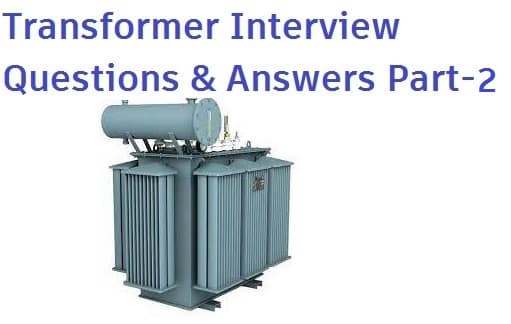
What is “voltage regulation” in a transformer?
Voltage regulation of transformer is defined as the percentage change in the transformer secondary voltage from no load to full load. In other words, the transformer voltage regulation describes the ability of the transformer to provide the constant voltage from no load to full load. The secondary voltage of the transformer should not vary with load when the input supply is constant. The transformer can be treated as a voltage source and the variation in the secondary terminal voltage from no load to full load depends on the voltage drop in the transformer winding.
What is the formula of transformer voltage regulation?

A transformer has 300 turns on the primary, 100 turns on the secondary, and 120VAC applied to the primary, what is the voltage across the secondary?
V2=40 Volts
The same transformed can be used as step up or step down transformer. It all depends on which side voltage is being applied. It is very easy to identify the transformer for step up or step down operation.

Measure the resistance of primary and secondary winding of the transformer.
The high voltage winding has more resistance because there is more number of turns of thinner cross section area wire.
The low voltage winding has low resistance because there is less number of turns of thicker cross section area wire.
Now we can use this transformer as a step or step down operation.
Why can’t we increase the frequency in a transformer keeping the voltage constant?
The magnetic flux produced in the transformer is proportional to the ratio of V/f. If the voltage is kept constant and the frequency is increased, then the flux gets decreased ( Over fluxing) . However, voltage induced in the secondary will remain the same because on increasing frequency flux is getting reduced.
This can be done if equipment accepts increased frequency.
What happens if the gaskets become hard for a power transformer?
The oil leakage problem starts with deformation of the gasket.
Conditions for Parallel Operation of Transformers
The following conditions must be satisfied for satisfactory performance when two or more transformers run in parallel.These are the conditions for parallel operation of transformers.
- The Same voltage ratio of transformer
- Same percentage impedance
- Same Same polarity
- The same phase sequence
- Same frequency
Why is more energy lost in iron loss compared to copper loss throughout the day in a distribution transformer?
The distribution transformer is supposed to deliver the variable load.The iron loss will be consumed throughout the day as the transformer remains in operation continually, and the copper loss is variable and depends on the loading of the transformer.
The distribution transformer has more core loss as compared to the copper loss and that is why the transformer is designed for lesser iron loss. The all day efficiency is applicable for the distribution transformer.
What is difference between ferrite core transformer and simple transformer?
The simple transformer is iron core transformer used at 50 or 60 Hz. The core is CRGO steel core. If the iron core transformer is used for higher frequency application, the iron loss and the hysteresis loss will increase drastically. The other alternative is use of ferrite core in place of steel core. The ferrite core has higher permeability as compared to steel core. It has lower retentivity and coercive force.
It is possible to reduce the size of the transformer with an use of ferrite core. The higher frequency ac needs lower turns to get the same KVA as we get with many turns with lower frequency.
If a step down Transformer is connected with its output and Input interchanged, does it work as a step up transformer?
The transformer can be changed from step up to step down by inputting the input supply.The transformer acts as a step down or step up application,depending on the supply feeding at the primary or secondary side.
If supply is fed at the side of the transformer having more turns the transformer acts as a step down transformer.If supply is fed at the side of the transformer having less turns the transformer acts as a step up transformer.
Why do we use soft iron instead of steel in transformers?
The soft iron core has less coercive force than the steel core. The permeability of the soft iron core is much higher than the steel core.The core loss in the soft iron core is very less as compared to the steel core.
For higher frequency application the soft core is used in the transformer to reduce the core losses.
A single phase transformer is to have a no load voltage ratio 6000/250v. What is the number of turns of each winding if flux is not to exceed 0.05wb?
VP/Vs= NP/Ns
24= NP/Ns
Turns ratio of transformer is 24:1
The turns ratio of a transformer is 10. What does it mean?
The turns ratio is the ratio of primary winding turns to secondary winding turns. Turns ratio= Np/Ns The high voltage side has more turns than the low voltage side of the transformer.
What is the use of silica gel in a power transformer?
Silica gel is used in the oil filled transformer to absorb the moisture from the air which enters in the conservator through the breather.The breather is filled with moisture absorbent (silica gel).
Which causes overheating of transformer?
The transformer overheats if
- The transformer is operated above its rated flux density
- Transformer is operated above its rated current capacity
In both the cases,the heat will be developed and it cause overheating of transformer. If the transformer is operated at its rated capacity the temperature rise can happen if cooling system is not properly working.
Related Posts